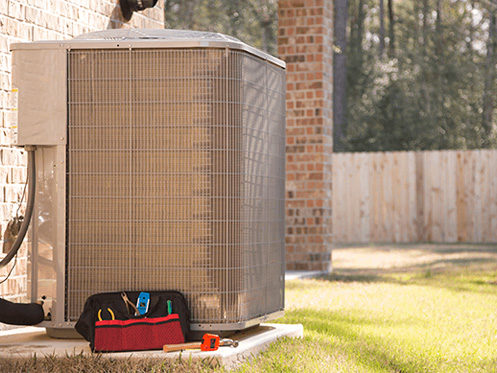Most people know what weeds look like. Especially this time of year because weeds are often winning the battle. What should good HVAC look like? First of all, what is HVAC? Being in the business it seemed everyone knew what HVAC was until a nice, elderly lady asked me to explain what HVAC means. HVAC is an acronym for heating, ventilation, and air conditioning. OK, let’s get back to weeds.
Our family farm was a good place to learn early in life what weeds look like. Dad handed me a sharp corn knife and sent me scurrying out to the fields to cut milkweeds, sunflowers, musk thistles, and the list goes on. Anything that was not a crop was an enemy weed!
That skill soon paid off at age 15 when I was hired to cut weeds for others. It was called roguing and it was a way for small-town kids to earn spending money. We didn’t have fast food places to work at, so it was a job local teenagers were anxious to do. A side benefit was the pride we gained in seeing a beautiful field after those nasty weeds were removed.
Spotting weeds became second nature. Today I see landscapes that are planted with good intentions but get weedy in a short time. Fighting weeds can be an ongoing battle that is often lost. Why plant the landscape and not maintain it?
Anyway, everyone knows what weeds look like and can appreciate the incredible beauty of well-maintained fields and landscapes. Do people know what good HVAC systems should look like?
Unlike spotting weeds, good HVAC systems will be difficult to spot for the untrained eye. It takes years of training before fully understanding an HVAC system is more than a furnace and air conditioner. It’s all the visible parts of the HVAC system and it also includes everything inside the system.
A good example is the inside of ductwork is not readily visible but can contain ugly “weeds” that should not be inside the ductwork. Those “weeds” are not weeds, but the debris that ends up inside of ductwork that should not be there. That list could include, but is not limited to dust, hair, construction debris, forgotten drugs, magazines, fast food wrappers, pop cans, toys, a gun, spider webs, decayed animals, and their feces…….the list goes on.
That dust and debris in ductwork collect moisture, which provides a good environment for mold. The inside of ductwork can also have odors from pets, cooking, smoking, and so on. Those odors may never completely go away, but ductwork cleaning helps.
Hopefully, you’ve had your ductwork cleaned. An average cost at John Henry's Plumbing, Heating, Air, and Electrical to clean the ductwork in a 1,000-square foot home is approximately $700. That cost is lower during HVAC equipment replacements. Beware of the ads for duct cleaning that have an initially lower price that increases once the scammers are inside your home!
Ductwork is very important in a quality HVAC system, but approximately 50% of the ductwork systems are sized or installed wrong. The supply air or return air ductwork is typically too small, which reduces the original installation cost so it can cover the low bids. Maybe that explains the cold or hot spots in your home. Properly sized ductwork will help distribute the air evenly to all rooms and also save money on energy because the air is easier to distribute.
HVAC systems should look good externally too. Outside condenser coil fins should be straight to allow good airflow. If they are bent from things like hail damage the reduced airflow will reduce energy efficiency and equipment life. That equipment will run almost continuously on hot days and not provide needed cooling.
The outdoor unit should be leveled properly. If it’s a heat pump, the unit should have ¼” of fall or tilt per foot away from the home. This allows needed drainage from the unit during the defrost cycle. It’s also important to have quality insulation of refrigerant lines to improve energy efficiency.
A good HVAC system balances indoor environmental comfort with other factors such as installation cost, ease of maintenance, and energy efficiency. An HVAC system that looks good will be the result of progressive planning and regularly scheduled maintenance to keep all components in good shape.
The reality is we should not be seeing weeds (especially within 3’-0” of an HVAC system) but with careful planning, we can see beautiful HVAC systems!

